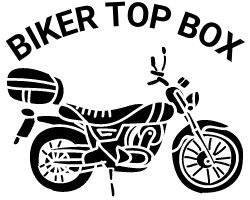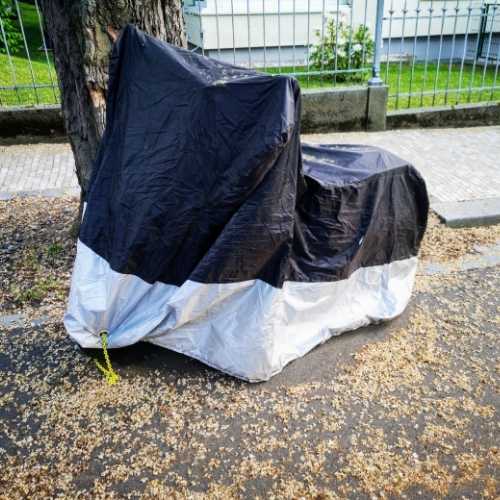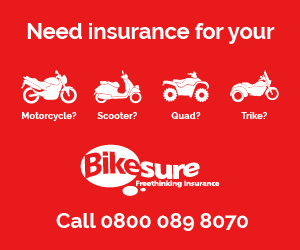If you are new to motorcycle riding in the UK, motorcycle CBT training will be the first step to obtaining a full motorbike licence. In this article, we look at the motorcycle CBT its requirements plus the benefit the training gives to new riders.
What is Motorcycle CBT Training?
The term CBT is an acronym for compulsory basic training.
The aim of the CBT is designed to ensure that learner motorcycle riders are safe to practice riding their motorcycles or scooters on the road while they prepare themselves for the practical motorcycle test.
Passing a full motorbike test will allow motorcyclists to ride without L-Plates and also give them the opportunity to ride larger motorbikes.
Currently in the UK learner riders can only ride motorcycles up to 125cc with a power output that does not exceed 11kw / 14.7bhp.
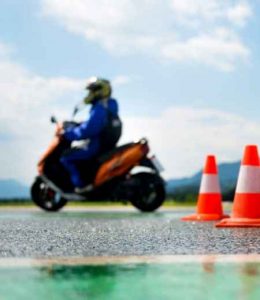
Typical Motorcycle CBT Training Day
Once you have booked your CBT training, you will be asked to attend the course at a local CBT training test center, the course itself can take up to 8 hours to complete this includes a break for lunch.
The cost of the training can vary depending on whether you use your own motorcycle or use the training centers motorcycle to complete the CBT training day.
Arriving at The Motorcycle CBT Training Center
Many new riders get very nervous before their CBT training day but let me reassure you, the day is very laid back and the nerves will soon disappear.
On arrival, you will gather with other riders who are taking their CBT course, it is a fairly long day so use this opportunity to talk to other riders and perhaps make a few friends, to make the day more enjoyable.
CBT Classroom Introduction
Firstly you will all go into a classroom at the CBT center, here the instructor will show and explain the motorcycle clothing and gear you will legally be required to wear, such as a helmet, they will show you how to ensure the helmet is in good condition and that it fits correctly so you are safe to ride a motorcycle. The instructor will also discuss other elements of clothing such as motorcycle gloves, boots, leggings, and jackets that are not a legal requirement but you should wear for your own safety.
Most CBT training centers will borrow this gear for your course if you do not have any.
(I recommend investing in your own gear if possible, such as helmet, gloves, jacket, and boots because the sizes available at the CBT center may be limited.)
Introduction To Your Training Motorcycle
Once the classroom part of the CBT has been completed the instructor will show you the motorcycle you will ride that day if you are using a test center machine, if you are using your own bike the instructor will ask you to get your bike and join the other motorcycle riders.
The instructor will now explain all the parts of the motorcycle or scooter to you, he or she will show you how to do safety checks such as checking the oil, tyres, and suspension. He or she will show you how to move the motorcycle safely walking next to the bike without dropping it.
The instructor will show you how to use items on the bike correctly, such as putting the stand down, how the clutch and brakes work, for example.
Riding The Motorcycle
Once the introduction to the motorcycle is complete it is now time to ride the motorcycle for the first time at your motorcycle CBT training day.
The first thing you will be shown is how to do low-speed manoeuvers, this part of the CBT will be completed off-road either on a car park area or piece of ground at the center.
The instructor will teach you how to move away and how to come to a safe stop on your motorcycle. Completing this part of the course off-road in a safe environment allows you to make mistakes without being a hazard out on a road with traffic and pedestrians.
The off-road area will have traffic cones that the instructor will use to create different maneuvers for you to practice on your motorcycle.
Riding your motorcycle you will complete tasks such as stopping and pulling off from a simulated road junction, you will perform a figure of eight maneuvers through cones to show your balance and control of the motorcycle, also riding the motorcycle you will be shown how to do U-turns and an emergency stop correctly.
Lunch Time on a Motorcycle CBT Training Day
Once the off-road motorcycle training has been completed it will be time for lunch, at this point you will be surprised just how quickly the morning session seemed to pass by.
If you have brought a packed lunch and drink with you now is the time to give yourself a boost of energy ready for the afternoon session, most motorcycle CBT training centers will have a nearby place to buy food and a drink but it is worth checking before turning up empty-handed.
Briefing Before Riding a Motorcycle on the Road
After lunch, it will be back to the classroom for a briefing about how to ride a motorcycle legally responsibly, and safely on the road.
The instructor will discuss the best practices such as remaining calm when riding, not getting into disputes with other motorists, not riding a motorcycle whilst under the influence of any drink or drugs plus never riding a motorcycle after an argument as this could seriously impact your judgment.
The instructor will also discuss the legal documents required for a motorcycle such as insurance, road tax, and a current MOT certificate.
Motorcycle CBT Training Out on The Road
Once the classroom briefing has been completed it is now time to put your morning training skills into action out on the road.
The first part of the motorcycle road riding will normally be completed on quiet roads such as an industrial estate so that the instructor can get you to perform some maneuvers using junctions and white line road markings to ensure you can make these moves correctly.
The instructor will check your road position and correct you if necessary by means of an intercom link in your helmet.
You will be required to make correct safety checks, such as looking over your shoulder before making a maneuver, you will use your indicators to show which direction of travel you will be taking to other motorists, plus an emergency stop on a road where you need to consider other vehicles around you.
The second part of motorcycle road riding on your CBT will be to ride on the main highway navigating roundabouts and junctions with your instructor giving you instructions using the intercom in your helmet.
Once the road riding session is complete it will be back to the motorcycle CBT training center for an evaluation.
End of Motorcycle CBT Training Day
Once the road riding part of the CBT has been completed the instructor will probably get you to park your motorcycles and head into the building to give you your results.
Motorcycle riders at this stage will get a CBT certificate, if your riding was deemed dangerous the instructor could recommend that you come back another day to take the training again.
The course itself is not a pass or fail test but an ongoing assessment of your riding capabilities, this will ensure you have obtained the right knowledge to ride in a safe manner on the road.
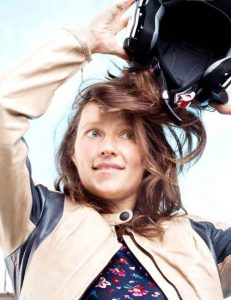
No products found.
Frequently Asked Questions
How long does a CBT Last?
A CBT lasts for 2 years after which time if you have not taken a full motorbike license test and passed, it will be necessary to take another CBT to continue riding a motorcycle up to 125cc with 11kw / 14.7 brake horsepower with L-Plates.
Can you fail a CBT?
No, you can not fail a CBT as it is not a pass or fail test, however, if your riding is deemed to be unsafe you will be advised to attend the course again for your own safety.
What happens if I do not take a CBT test?
If you ride on the road without taking a CBT in the UK you could be fined up to £1000 and obtain points on your driving license.
Can I ride a 125cc motorcycle on a motorway?
Yes but only with a full motorcycle license, if you ride a 125cc motorcycle with a provisional license and have passed a CBT you cannot ride legally on a motorway.
Conclusion
In conclusion, a motorcycle CBT training day will teach a rider all the basics required to ride a motorcycle safely on the road whilst displaying an L-Plate to warn other road users that you are a new rider.
A CBT training day can be an enjoyable experience and will teach a rider how to maneuver a motorcycle or scooter safely.
The CBT (Compulsory Basic Training) is not a pass or fail test process, it is a training program designed to ensure new motorcycle riders have the correct knowledge before riding on main roads in the UK.
